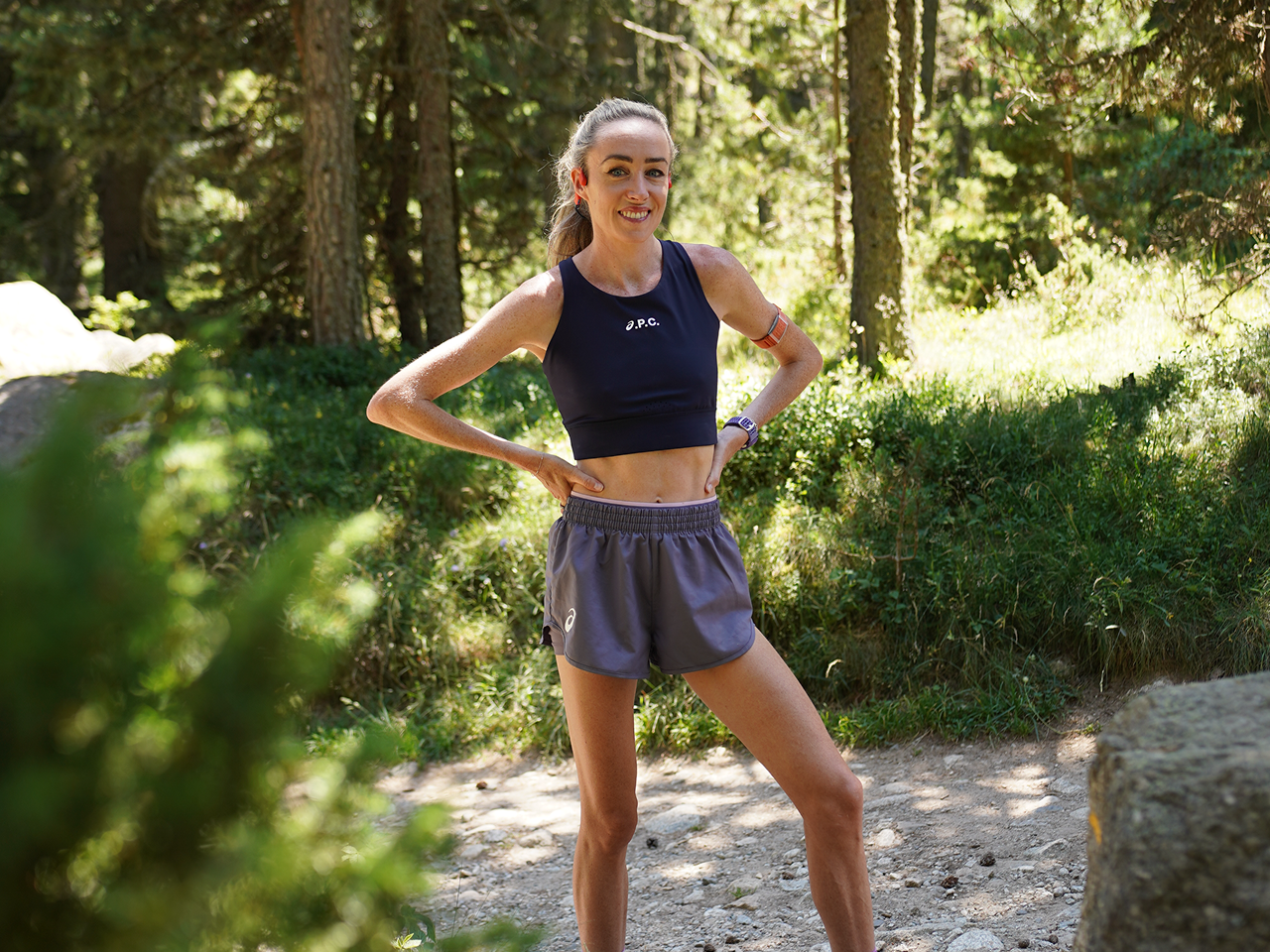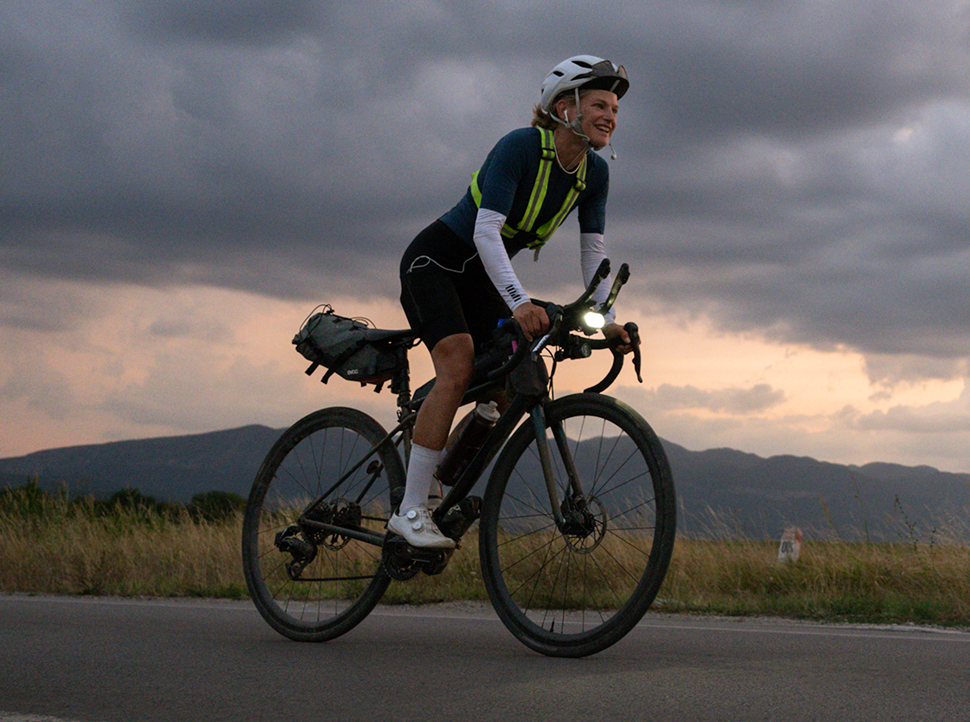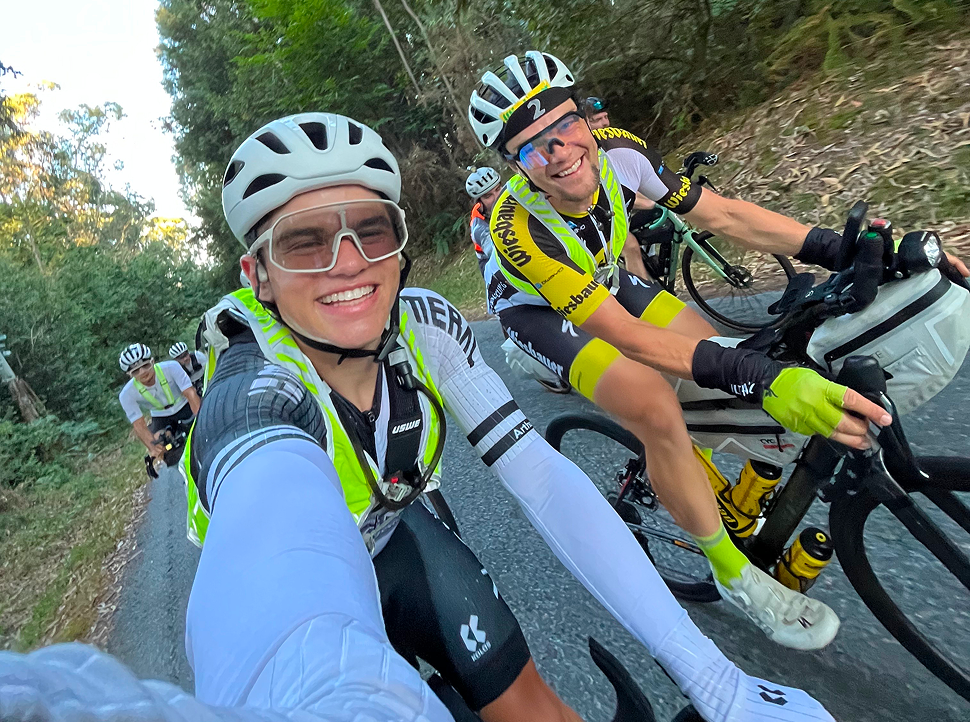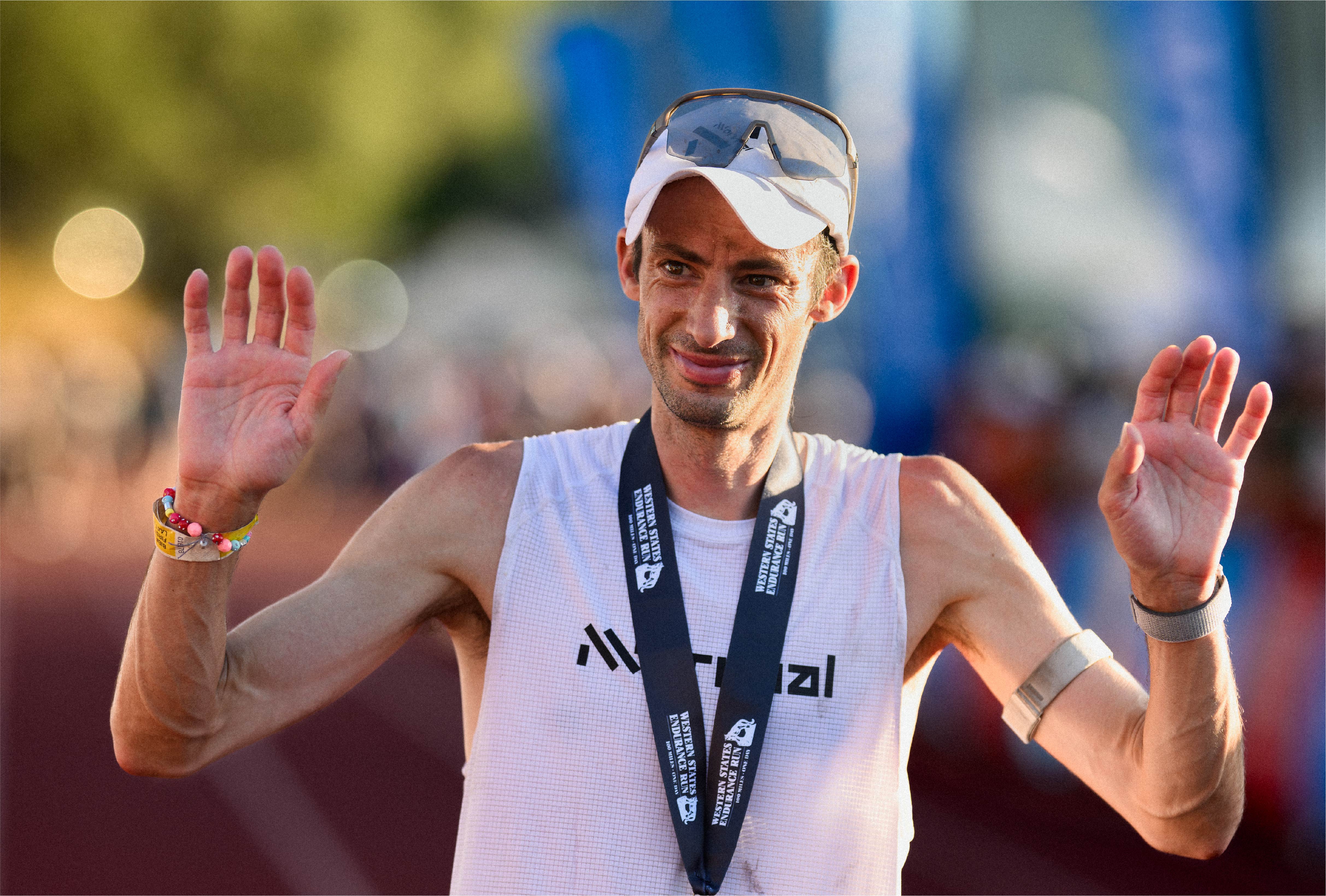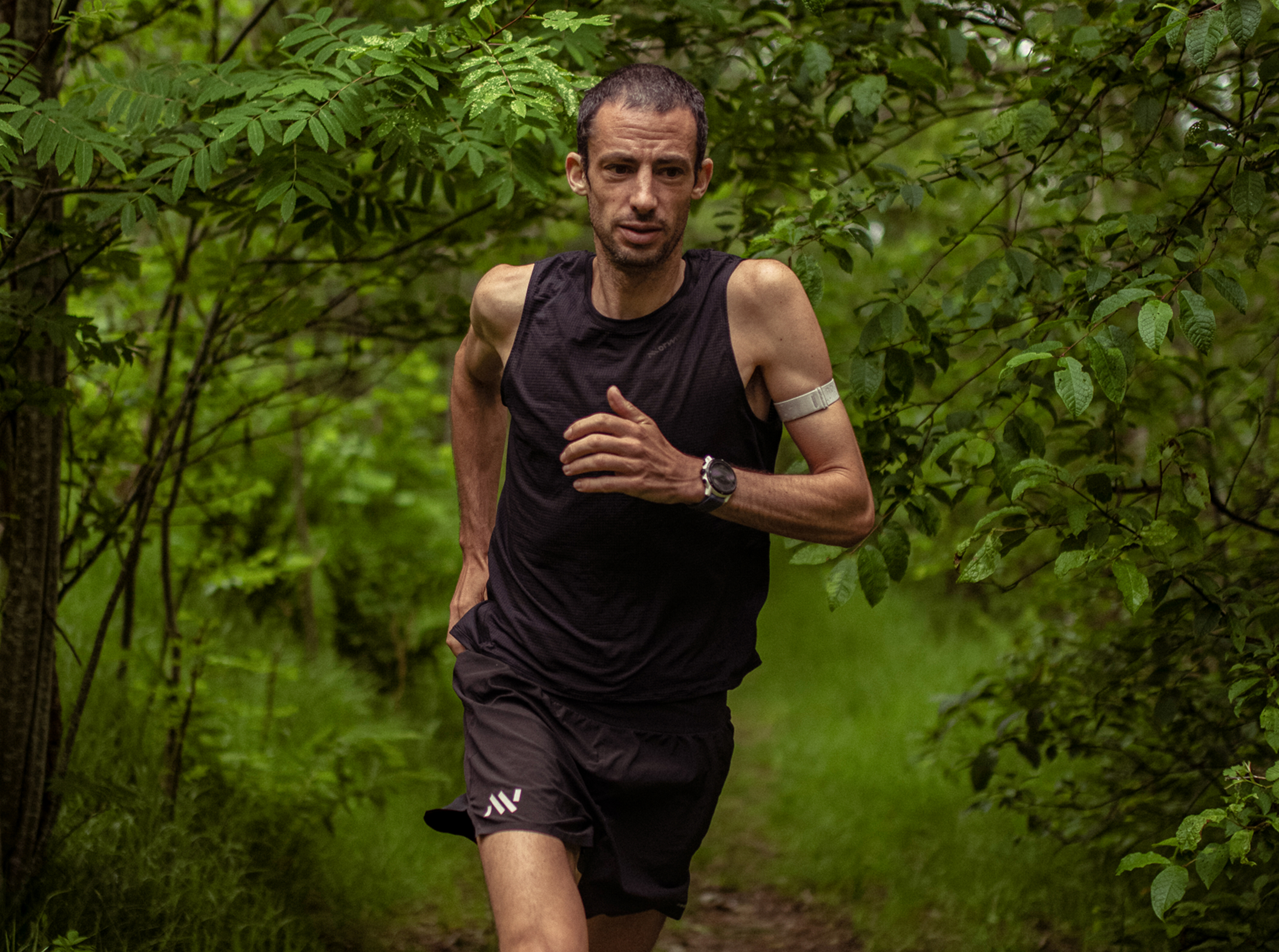Phil Sesemann, one of the UK's standout marathoners had a busy first half of 2023! Starting with a quick indoor 3km beating 2022 World Champion Jake Wightman and moving on to an incredible 8th place at the London Marathon earlier in Spring, clocking 2:10.23! Again outkicking a World Champ this time in the form of Sir Mo Farah in the final yards of the race, this range is something that Phil has honed over time, but to be successful in both long Aerobic and shorter Anaerobic efforts requires specific training and blocks of training that are geared to the demands of the event. Since London, he's recovered and has dropped down in distance, by 37km to target a 5km on the track. All with the aim of progressing his speed for another Autumn racing on the roads, keeping his motivation high and bringing a new challenge to his training.
Phil has been slowly getting back into the swing of training, currently at altitude camp in Font Romeu, ahead of an Autumn on the roads. We caught up with him to look through his Training Hub data, just like we did in April for our More Than Splits Series | Phil Sesemann Training Leads to a 2:10 at London. This time we are comparing the final 10-week training block building up to London, with a specific 10-week 5km track-specific block. Both are a great contrast to one another and through the help of our Evolab Metrics we can see just how the data can ensure you are implementing the training principle of specificity and correctly training for the demands of your event!
What is the Training Principle of Specificity?
The specificity principle of training suggests that to perform at the optimum you need to be trained to the demands of the event. When you apply this to a training block, it means that you are exposing yourself to the right physiological systems that are used during the particular event or activity you are targetting. In doing so, your body adapts to the stress or load of that specific training. For example, in a marathon specific training would be focussing on your aerobic capacity, like a long run of up to 18-20 miles. In this context, we are comparing a specific 5km training block vs a specific marathon training block, two disciplines that require very different training styles.
Side-by-Side Training Blocks
Phil had a 10-week training block leading into his 5km race, after recovering from the marathon, he started the block in early May. Throughout the 10 weeks, he averaged 965 miles at an average pace of 6'55" per mile. In the final 10 weeks before his taper into London Phil covered an extra 207 miles and his average pace fell to 6'34" per mile! We'll show why this is the case further down. He increased his Base Fitness during these blocks by 32 peaking at 180 leading into London and by 33 points ahead of his track 5km, peaking at an impressive 193!

10-Week London Marathon Training Block Figures

10-Week 5km Training Block Figures
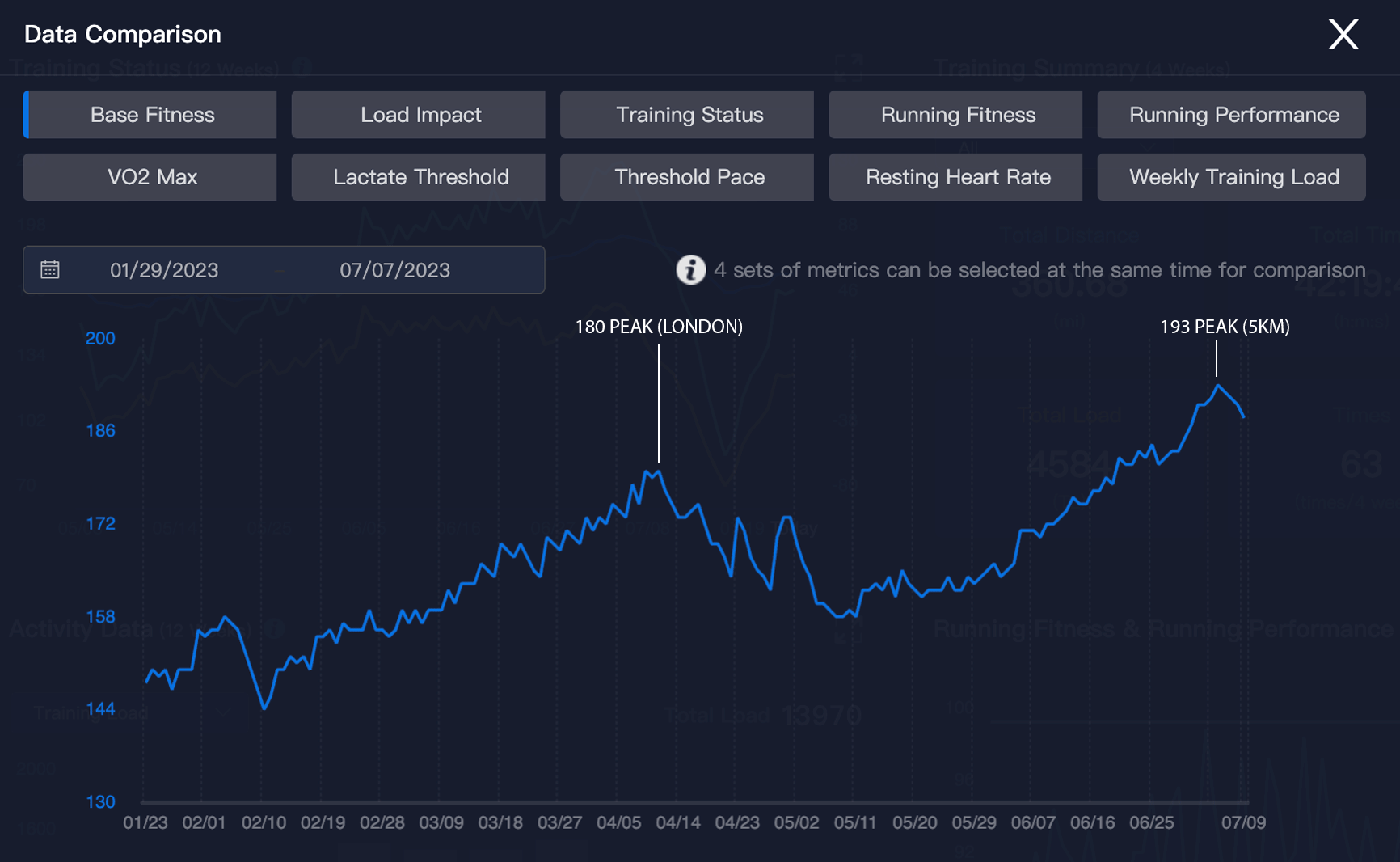
Phil Sesemann's Peak Base Fitness for both Training Blocks
Interestingly, Phil increased his Base Fitness, which is a rolling 42-day average of your training load, by a similar amount for both 10-week blocks, but as we'll see the makeup and stress he put on his body was very different.
Using the right Training Zones for your training
As you would expect for the marathon, most of his time was spent in Zone 1, 2, or 3. These zones make up your Aerobic Base and Threshold which are specific demands for a Marathon. In all, 90% of his entire Training Load came from these zones with 52.5% being in those long extended marathon-specific sessions. This meant that the remainder of his Training Load, 9.3%, came from the Anaerobic Zones. Throughout this block, Phil could use the Evolab Metrics to analyse his time spent in these zones and adjust training if needed.
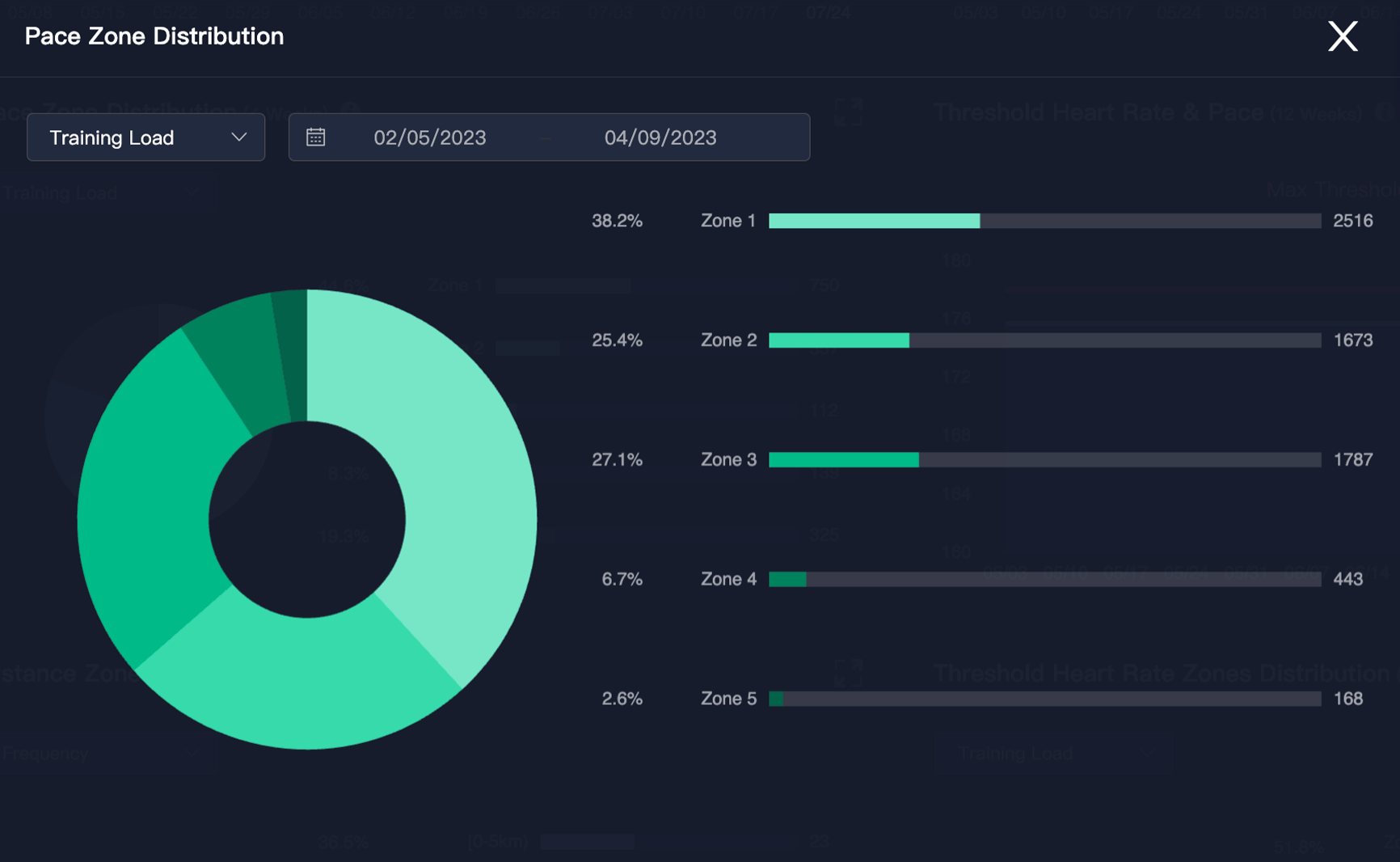
Phil Sesemann's Pace Zone distribution for a 10-week marathon training block
Conversely, for a 5km track race, Phil's Training Load for the anaerobic zones rose by over 200% to 28.7% for both the Anaerobic Endurance and Power. The nature of the sessions that Phil was doing in prep for his 5km was much shorter in duration but incredibly demanding. The image below highlights the intense training period where his Load Impact was at its highest, building right into the race day. Load impact measures the amount of impact brought to your body from short-term training, and it is calculated based on the training load in the last 7 days. As noted above, While Phil's average pace for his 10-week 5km training block was slower, that is because he was either running exceptionally hard or very easy. This is ultimately the only way to recover enough to sustain those high-end efforts!
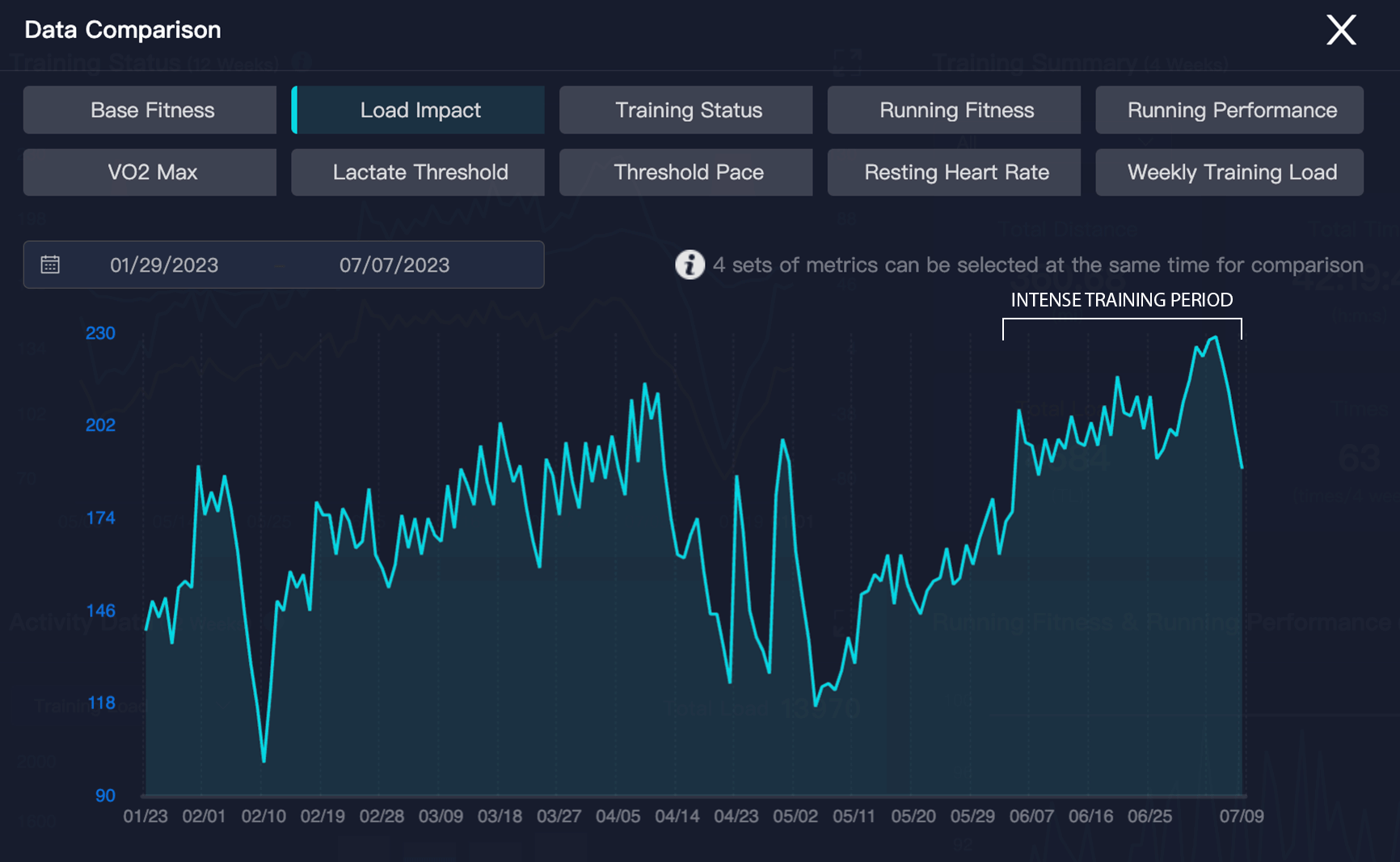
Phil Sesemann's Load Impact during the intense final period of 10-week 5km training block
Tracking your data is just as important whether you're an elite like Phil, or targeting your first 5k as an amateur. Knowing if you're training properly is the single best confidence booster any athlete can obtain. If you're unsure how to plan your own training and don't have a coach to guide you, check out our marathon training plans, or, if you have the need for speed, download our 12-Week Run Speed Development Training Plan. The key to unlocking your potential is all within the data, and COROS is here to help you every step of the way!

/filters:quality(90)/fit-in/970x750/coros-web-faq/upload/images/54fe74028dd4dc8d9729d4da56522a37.png)
